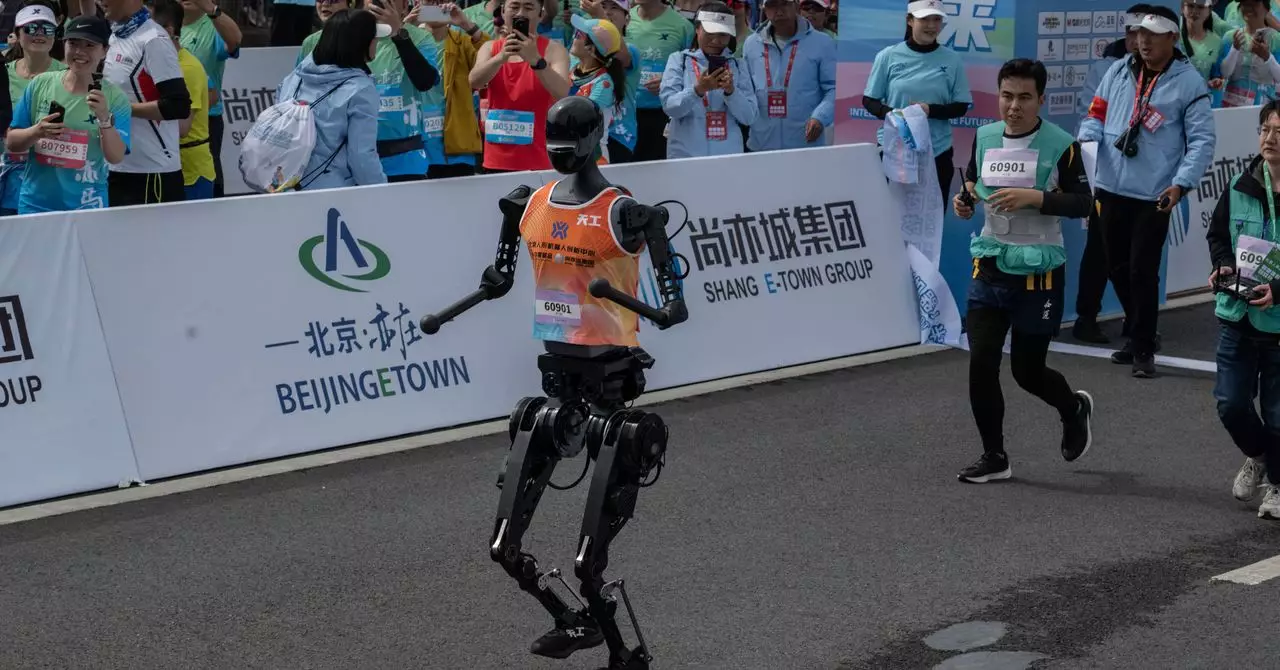Humanoid robots have captured the public’s imagination for years, often depicted as futuristic companions capable of performing a myriad of tasks. However, while the capabilities of these machines can impress—take, for example, their mesmerizing dance routines or the ability to run a marathon—these skills fail to reveal their true potential or value in practical applications. As roboticist Fern points out, the allure often diminishes when we confront the simpler truth: these robots must rise beyond entertaining spectacles and prove their utility in solving real-world problems. The market demand isn’t for robotic performers but for machines that can seamlessly integrate into everyday life, tackling tasks that go beyond mere human mimicry.
This year, there’s a palpable anticipation that countries like China will redirect their focus from frivolous performances to increasing the functional viability of humanoid robots. Given the collective ennui surrounding robots that dance or show off martial arts, moving towards practical capabilities is not just desirable; it’s essential. As the novelty fades, developers must find meaningful benchmarks that truly reflect the robots’ capabilities: Can they follow complex instructions? Can they adapt to unforeseen circumstances without relying on a human crutch? These are the metrics that will determine the future of humanoid robots.
The Peculiarities of Robot Design
The recent humanoid robotics race highlighted an intriguing variety in design and execution, underscoring the creative limitations often placed on robotic engineers. The diversity in robot stature, from a diminutive 2 feet 5 inches to the formidable 5 feet 9 inches Tiangong Ultra, showcases the different approaches taken to meet the race’s criteria of bipedal movement. Specifically, participants were innovatively outfitted to balance functionality with appearance. While some adorned colorful sneakers secured to their feet, others donned knee pads to guard against the inevitable falls that tend to occur when navigating a racecourse.
It’s important to note that competing on foot, rather than with wheels, demands a great deal of engineering prowess—not just in design, but also in materials and systems employed. In this context, the race became a testament to both the limitations and ingenuity of robotics as teams stripped their machines of nonessential components like fingers or even heads to lighten the load. This aggressive simplification can lead us to question the future trajectory of humanoid robotics: How much should we engineer form over function, and at what cost?
Chaos on the Racecourse
What the race also illustrated, starkly and sometimes comically, was the unpredictable nature of these machines. While some humanoids, like Tiangong Ultra and the Noetix Robotics-operated N2, managed to maintain a steady—even if laboriously slow—pace, numerous other robots faced calamity. The Huanhuan robot, with its unstable human-like head, exhibited a stunning inability to maintain balance, moving at a pace reminiscent of a sloth but not nearly as charming. In contrast, Shennong, whose design evoked images of a Frankenstein-esque creation, spiraled into absurdity, crashing into obstacles and crashing through any expectations of competence.
The stark contrasts between aspirational designs and actual performance underline the ongoing challenges facing engineers in this field. Duct tape emerged as an unlikely hero, serving not just as emergency repair kits but as symbols of the chaotic, trial-and-error nature inherent in robot design. It became the go-to solution for reattaching body parts, further emphasizing the need for more resilient designs that don’t fall apart mid-race.
The Human Element in Robotic Competition
Perhaps what stands out the most is the significant human involvement in operating these robots. Runners could often be seen tethered to their machines, guiding them through the race as if they were walking a pet dog. The notion that these humanoids are extensions of their human operators is a compelling reminder of their current limitations. These technological marvels, designed to evoke visions of autonomous beings, have transformed into mere remote-controlled devices before they can navigate their surroundings unaided.
Fern aptly likens the interaction between humans and robots to that of guiding a remote-controlled car. While entertaining, the reality that these robots often require substantial human intervention diminishes their perceived autonomy. As we move forward in the exploration of humanoid robotics, it’s this ongoing dance of human guidance and mechanical capability that will dictate how we integrate robots into our lives. The journey highlights the immense potential of humanoid robotics, but it also starkly reveals a glaring gap between illusion and reality that needs to be bridged before they can truly thrive in society.

